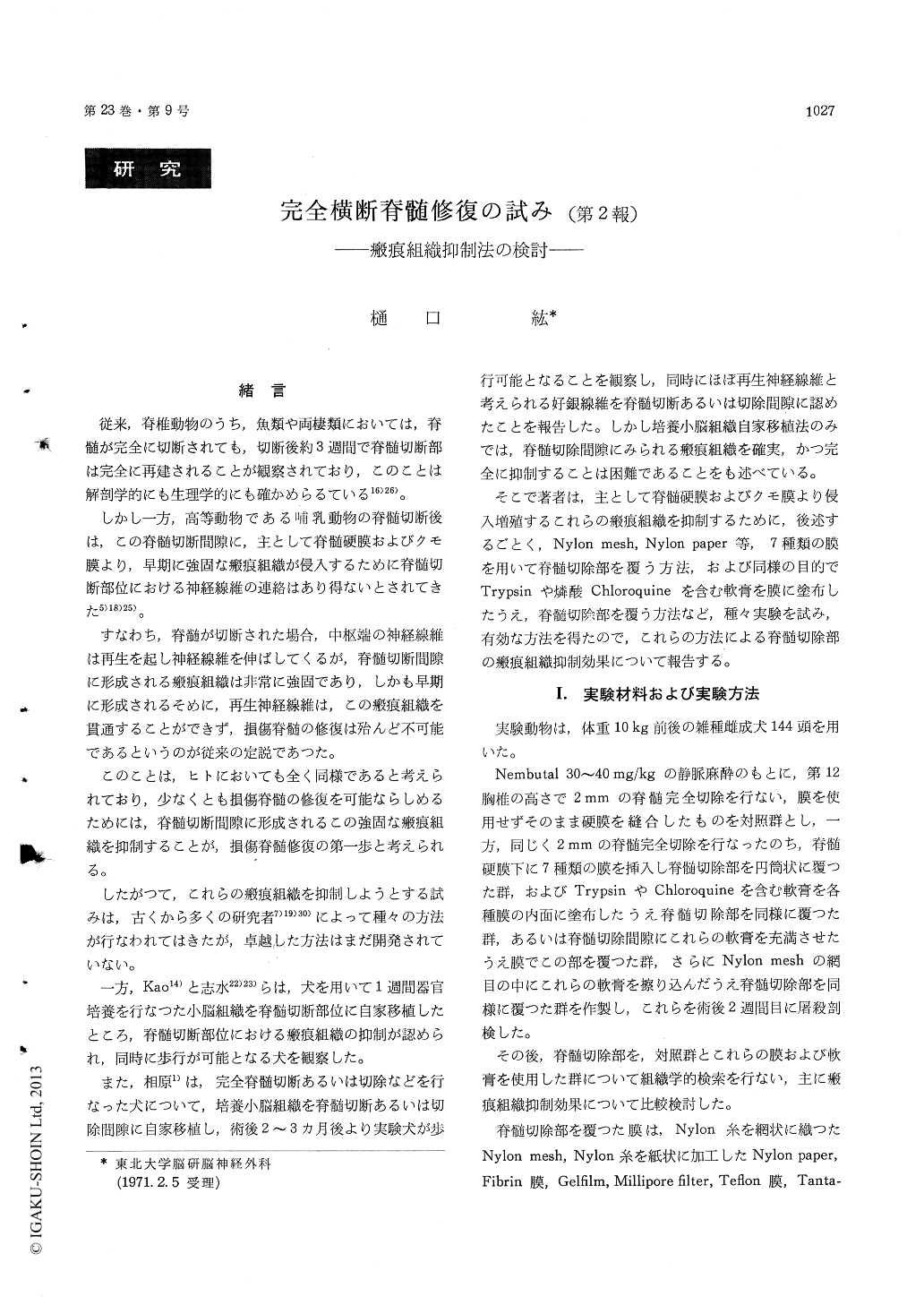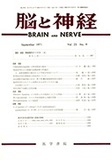Japanese
English
- 有料閲覧
- Abstract 文献概要
- 1ページ目 Look Inside
緒言
従来,脊椎動物のうち,魚類や両棲類においては,脊髄が完全に切断されても,切断後約3週間で脊髄切断部は完全に再建されることが観察されており,このことは解剖学的にも生理学的にも確かめらるている16)26)。
しかし一方,高等動物である哺乳動物の脊髄切断後は,この脊髄切断間隙に,主として脊髄硬膜およびクモ膜より,早期に強固な瘢痕組織が侵入するために脊髄切断部位における神経線維の連絡はあり得ないとされてきた5)18)25)。
Reconstruction of the injured spinal cord has been an interesting problem to many investigators and not a few attempts have been reported recently.
If the spinal cord was transected, the gap of the severed cord used to be filled with the thick col-lagenous scar and regenerating nerve fibers seemed to be inhibited to pass through this scar tissue.
In this study, one hundred and fourty-four female adult dogs were used. The spinal cord was com-pletely resected 2 mm in length at the Th-12 level in the control group, while in a experimental group the resected spinal cord was wrapped with seven kinds of membranes placed under the dura mater.
In the another experimental group the resected spinal cord was wrapped with the membrane ap-plied with chloroquine or trypsin ointment.
Autopsy was performed 2 weeks after the opera-tion and Masson-Goldner staining was done for histological examination of the spinal cord at the transected portion.
It was revealed that the gap of the spinal cord was filled only with collagenous scar in the control group.
This collagenous scar formation was inhibited in the group of Nylon mesh and Nylon paper, but this inhibition was not noted in the group of Fibrin film Gelfilm, Millipore filter, Teflon tape, and Tan-talum membrane.
In the group of Nylon mesh covered with high concentration chloroquine ointment, the scar for-mation was inhibited most effectively.
In the other group of trypsin used instead of chloroquine, the effectiveness of inhibiting scar formation was noted with some variety and in average it was not so effective as chloroquine.

Copyright © 1971, Igaku-Shoin Ltd. All rights reserved.


